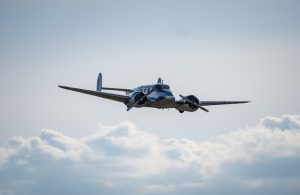
Do you know the difference between piston and turboprop airplanes? Whether it’s a private or commercial, wide body or narrow body, all airplanes have one or more engines. Engines generate thrust, which propels airplanes through the air so that they can achieve and maintain lift.
What Is a Piston Airplane?
A piston airplane is a type of airplane that’s powered by one or more reciprocating engines. They are commonly used with propeller aircraft. Airplanes and other types of aircraft that feature a propeller will often have a reciprocating engine, which turns the propeller blades.
Reciprocating engines work by converting pressure into rotational motion. They still burn a mixture of fuel and air — just like jet engines and even automobile engines. As they burn this mixture, however, reciprocating engines generate hot exhaust gases. These hot, pressurized gases turn a crankshaft. Reciprocating or “piston” engines use a piston in this conversion process.
What Is a Turboprop Airplane?
A turboprop airplane is a type of airplane that’s powered by one or more turboprops. Not to be confused with a turbofan, a turboprop is a type of turbine engine.
Turboprops feature several components, including the following:
- Air intake
- Compressor
- Combustion chamber
- Turbine
- Propelling nozzle
Turboprop engines are essentially a cross between a propeller engine and a jet engine. They burn fuel and air, and they turn an attached propeller.
Turboprop engines are more complex and expensive than piston engines. They offer higher efficiency and performance, especially at higher altitudes and speeds. This makes them ideal for larger aircraft and regional airliners.
Differences Between Piston and Turboprop Airplanes
Piston and turboprop airplanes aren’t the same. They are powered by different types of engines. Piston airplanes are powered by one or more reciprocating or “piston” engines, whereas turboprop airplanes are powered by one or more turboprop engines.
While piston and turboprop airplanes both feature one or more propellers — typically one propeller per engine — piston airplanes are typically smaller than their turboprop counterpart. Piston engines are smaller and use a simpler design. Therefore, they are better suited for small airplanes.
Turboprop engines, on the other hand, are larger and more complex. However, they are also more efficient. This makes turboprop engines a popular choice for larger and regional airplanes. Turboprop airplanes can achieve faster speeds and fly for longer distances than piston airplanes.
In Conclusion
Not all propeller airplanes are powered by the same type of engine. There are different types of propeller-turning engines, two of the most common being piston and turboprop. Piston engines burn fuel and air, and with the help of a piston, they turn a propeller. Turboprop engines are larger and more complex propeller-turning engines.



